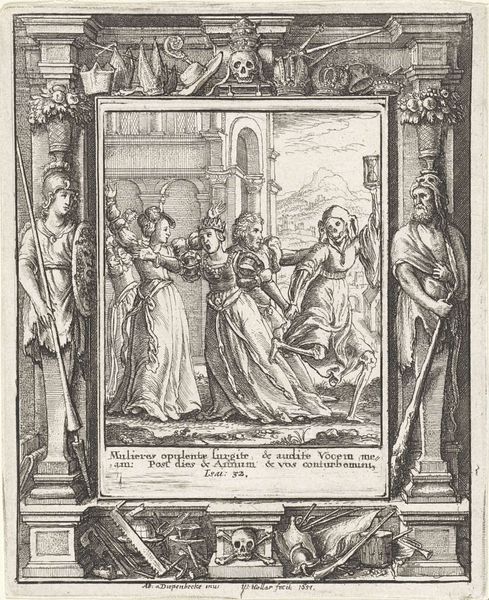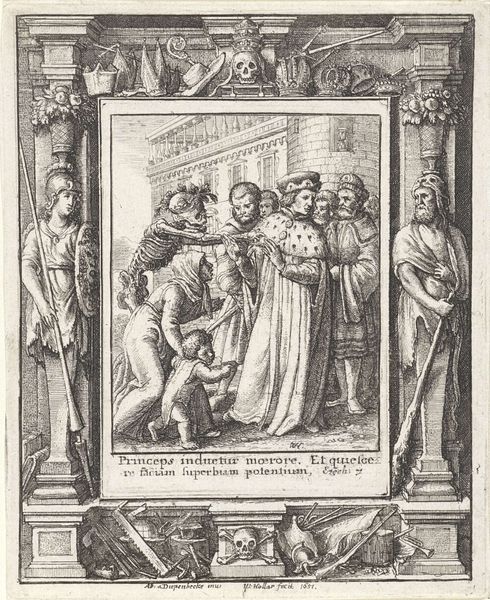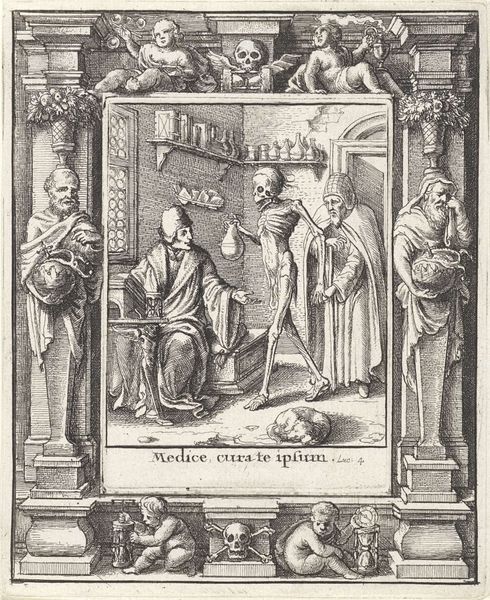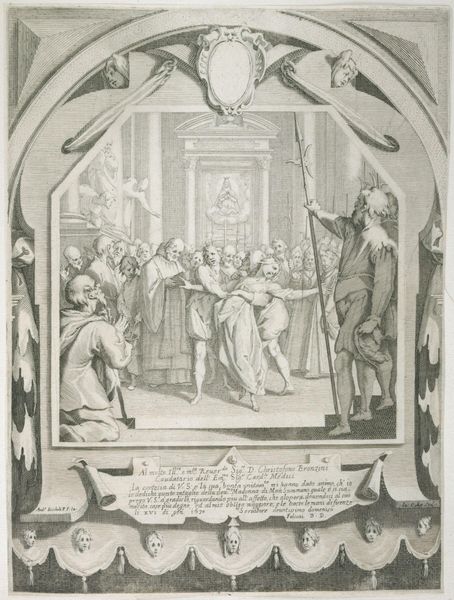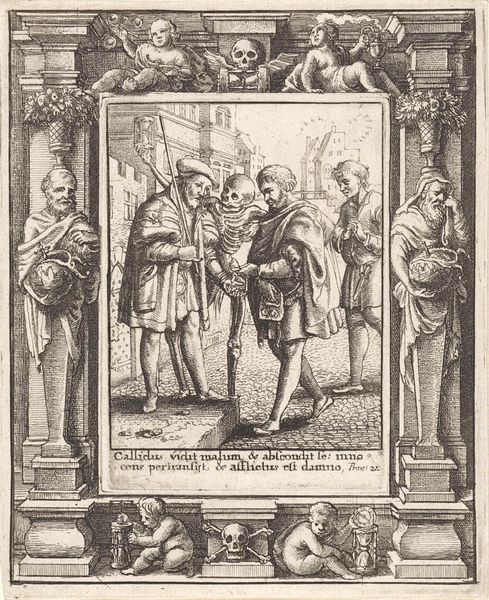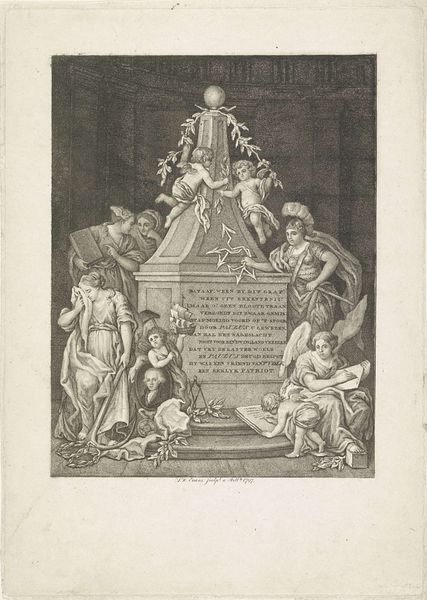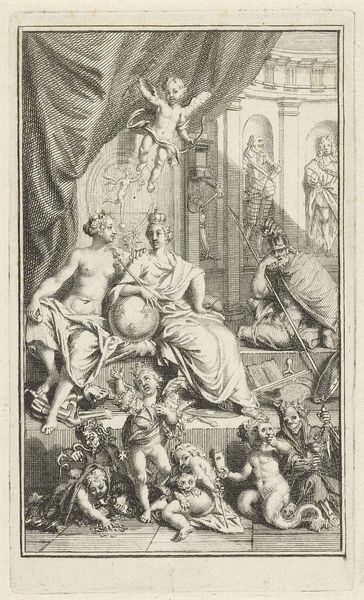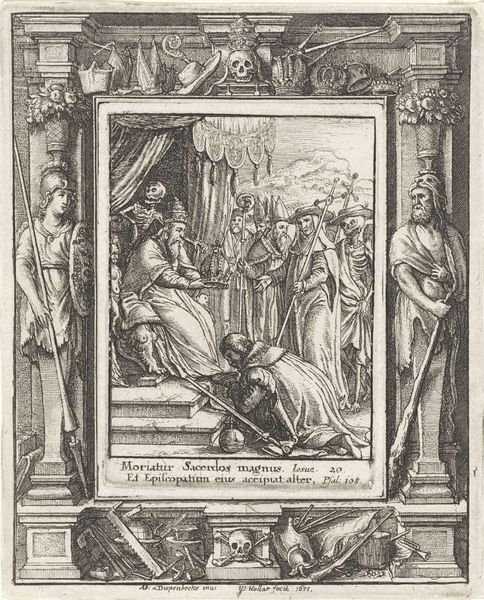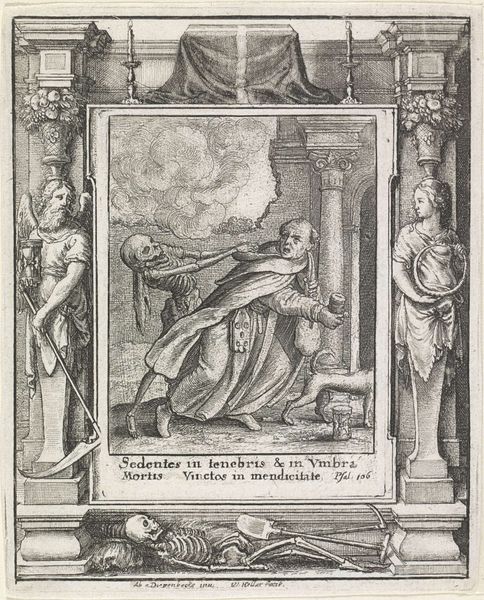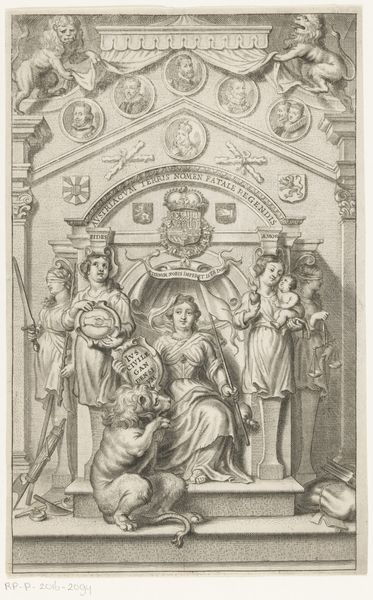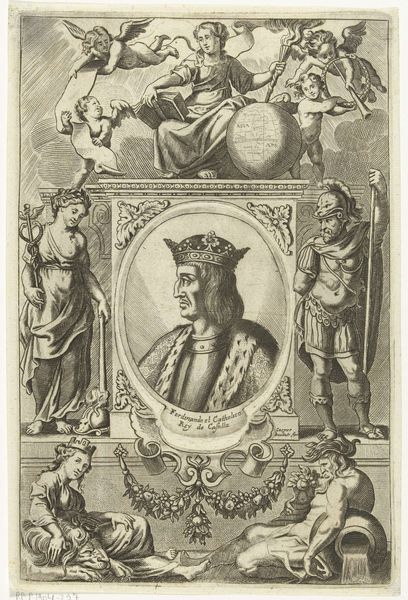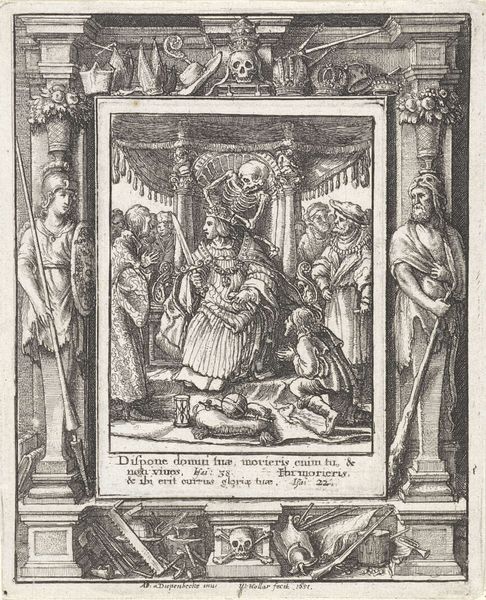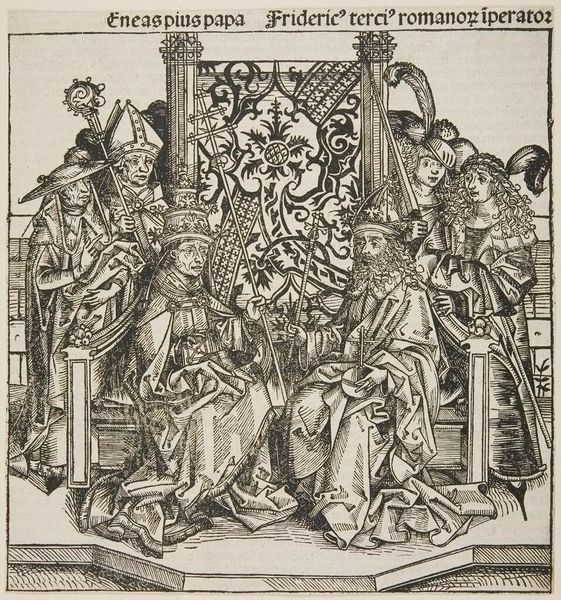
print, engraving
#
allegory
#
baroque
#
pen drawing
#
mechanical pen drawing
# print
#
pen illustration
#
pen sketch
#
old engraving style
#
vanitas
#
history-painting
#
engraving
Dimensions: height 115 mm, width 95 mm, height 77 mm, width 55 mm
Copyright: Rijks Museum: Open Domain
Wenceslaus Hollar made this etching, “The Empress and Death,” in 1647. The skeletal figure of death accompanies a sumptuously dressed noblewoman, reminding us of the vanity of earthly power. This piece emerged during the late Renaissance, a period marked by stark social hierarchies and, in the Netherlands, the rise of a wealthy merchant class. Note the imposing architectural backdrop and the classical figures that frame the scene. These details speak to the social aspirations of the Dutch elite but also remind us that Hollar was working for a print market keen to exploit the anxieties of a society experiencing rapid social change. The work participates in the contemporary "memento mori" tradition, reminding viewers of their mortality irrespective of social standing. Historians turn to sources like period literature, fashion, and even medical texts to fully understand the social commentary embedded in images like this. By understanding its historical context, we gain insight into how art reflects and shapes social values.
Comments
No comments
Be the first to comment and join the conversation on the ultimate creative platform.
